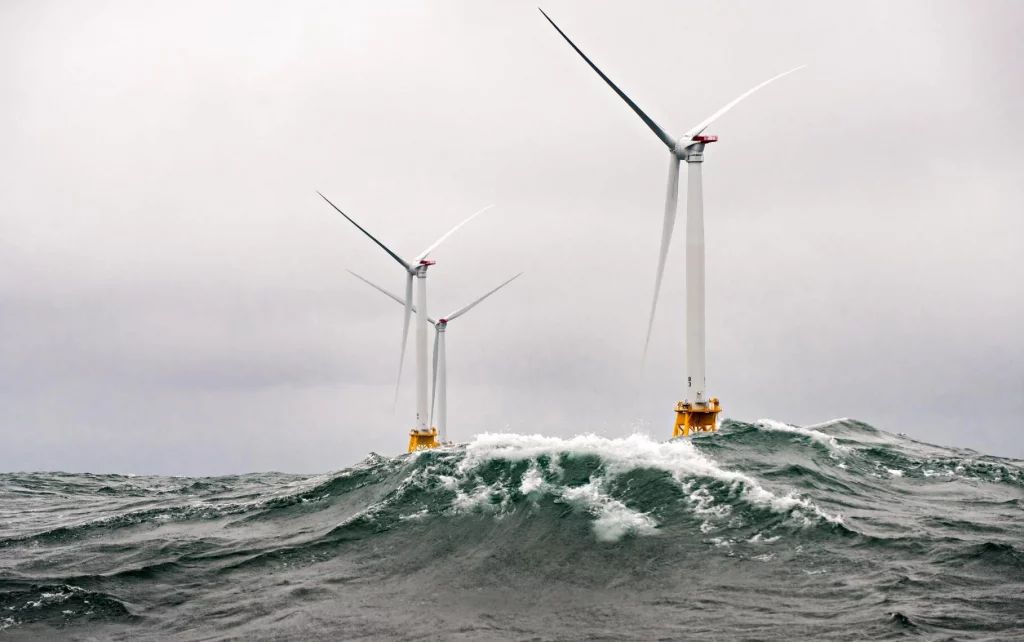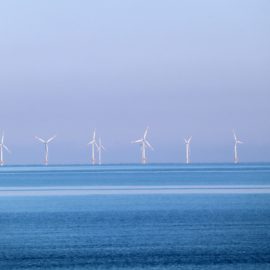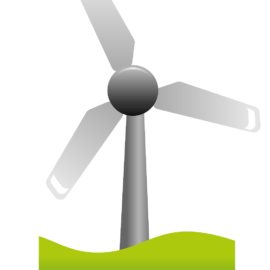
U.S. Department of Energy
Offshore energy took another first step forward as the first leases areas were identified.
The federal government has selected the first two areas for offshore wind development in the Gulf of Mexico, clearing the way for a process that could have windmills spinning over the waves near Louisiana by the decade’s end. The U.S. Bureau of Ocean Energy Management on Monday finalized the boundaries for the two zones: a 174,00-acre area south of Lake Charles and a 508,000-acre area near Galveston, Texas. The two areas have the potential to generate enough power for almost 3 million homes, according to BOEM. That’s enough electricity for the combined populations of Houston, New Orleans and Baton Rouge. The commercial leasing process for the two areas is expected to begin by the middle of next year. After a multi-year site assessment, survey process and environmental review, offshore wind developers could begin installing turbines before 2030.
nola.com
This is a big step as the leases will spur development.
U.S. Rep. Troy Carter, D-New Orleans, said BOEM’s site selection is an “important first step” toward a stronger economy and cleaner energy for the Gulf region. “Offshore wind is a key component to achieving our nation’s clean energy goals to lower costs and cut pollution, while creating good jobs for Americans,” he said. The region is well-positioned to be a wind energy powerhouse. Thanks to the offshore oil and gas industry, the Gulf Coast already boasts many of the skill sets required for the offshore wind industry, including steel fabricators, marine engineers and vessel operators. “These two wind energy areas represent exciting progress toward having the first offshore wind lease sale in the Gulf of Mexico, where there is a mature industry base and the know-how to advance energy development in the Outer Continental Shelf,” BOEM Director Amanda Lefton said. Several Louisiana companies rooted in the offshore oil and gas industry helped design and construct the U.S.’s first offshore wind farm, which was built off the coast of Rhode Island in 2016, and they’ve been active in other wind projects along the East Coast. “The Gulf of Mexico is already integral to the U.S. offshore wind market with regional businesses steadily providing the supplies, materials, and expertise to build the first U.S. projects,” said John Begala, a policy expert with the Business Network for Offshore Wind. Developing offshore wind projects in the Gulf benefits all U.S. wind projects because it will “open the door to a more robust national supply chain” from Gulf-based businesses, he added.
Wind farms are on the East Coast from Massachusetts to Virginia and California will be the next.
Wind projects have been taking shape in federal waters near Massachusetts, New York, Maryland, Virginia and other Atlantic states. Lease sales for the California coast are set to begin in December. The Lake Charles zone, which would be located about 56 miles from the coast, could generate power for almost 740,000 homes – just under half the households in Louisiana – and spur engineering and construction jobs for a region hit hard by Hurricane Laura and other storms. The Galveston zone could produce enough power for 2.1 million homes, according to BOEM estimates. A study conducted by the National Renewable Energy Laboratory in 2020 predicted that a 600-watt wind project near Lake Charles would create 4,470 construction jobs and generate about $450 million in goods and services. Once constructed, the comparatively modest-sized wind farm would support 150 jobs and an annual infusion of $14 million into the economy from operations, maintenance and materials. Opening more federal waters to offshore wind is part of a push by President Joe Biden’s administration to generate 30 gigawatts of offshore wind power by 2030. Gov. John Bel Edwards is also a wind energy backer. His administration wants the Louisiana coast to generate at least 5,000 megawatts of wind energy as part of a larger goal of “net zero” carbon emissions by 2050.
There is interest in building the wind farms.
The world’s two largest offshore wind developers have already shown strong interest in building wind farms near Louisiana. Orsted of Denmark and RWE of Germany both highlighted Louisiana’s political support for offshore wind in letters to BOEM. RWE, which has renewable energy operations in 15 countries, urged regulators to focus on Louisiana despite studies showing that the Texas coast has stronger, more consistent wind speeds. “To date, Louisiana is the only state along the Gulf of Mexico that has signaled its interest in pursuing an offshore wind policy to meet its climate objectives,” an RWE manager told BOEM early this year. The Gulf’s two wind areas total 682,000 acres. That’s about 53,000 fewer acres than BOEM proposed earlier this year. The areas were trimmed after the agency heard concerns about overlapping uses by the U.S. Navy and various industries, including shipping, fishing and oil and gas. Most public input on the wind zones came from Texas groups and residents. The most common concerns expressed to BOEM were over the survival of migratory birds and ensuring that wind farms offer safe, good-paying jobs. Lefton promised to keep listening to stakeholders as leasing areas and construction proposals take shape. “BOEM will continue to work with the coastal states and communities as we advance our work and do so in a manner that seeks to avoid or minimize conflicts with other ocean uses and marine life in the Gulf of Mexico,” she said. The next step in BOEM’s process is a “proposed sale notice” with a 60-day public comment period that would begin later this year or early next year.
It is years in the making but it should help with both the amount of energy and the cost.



